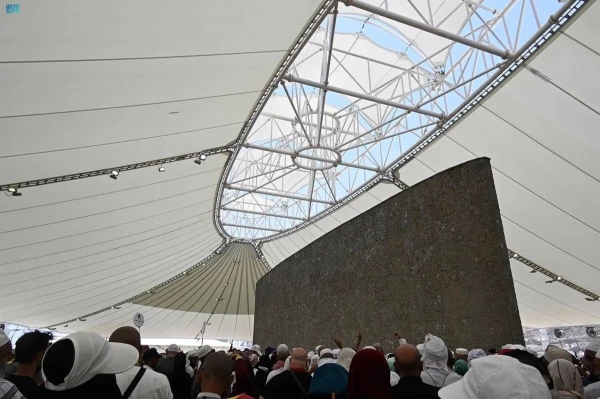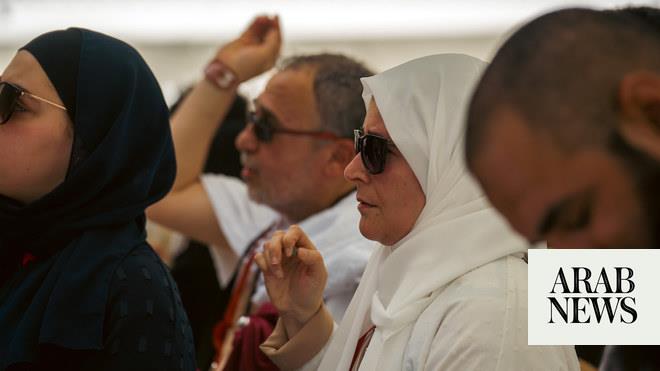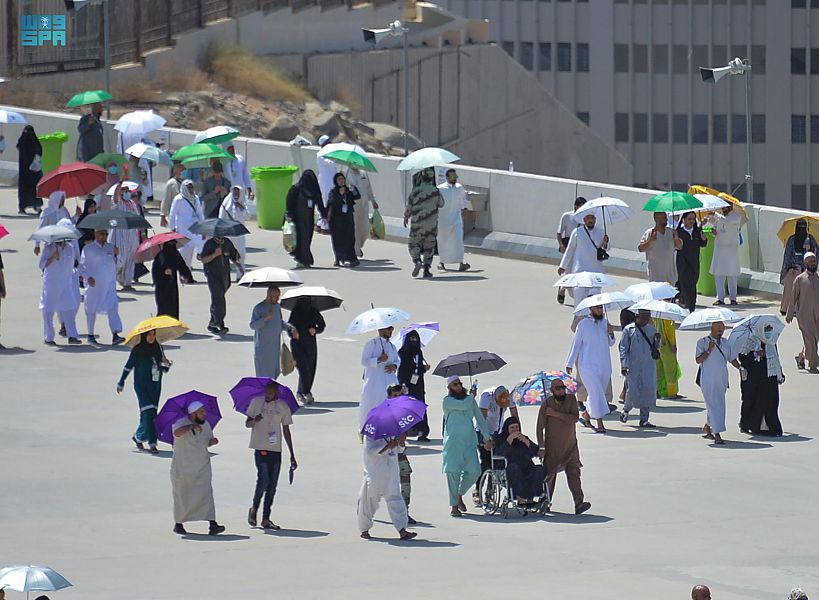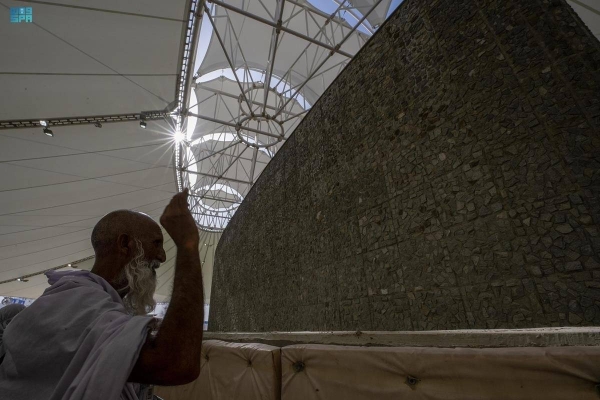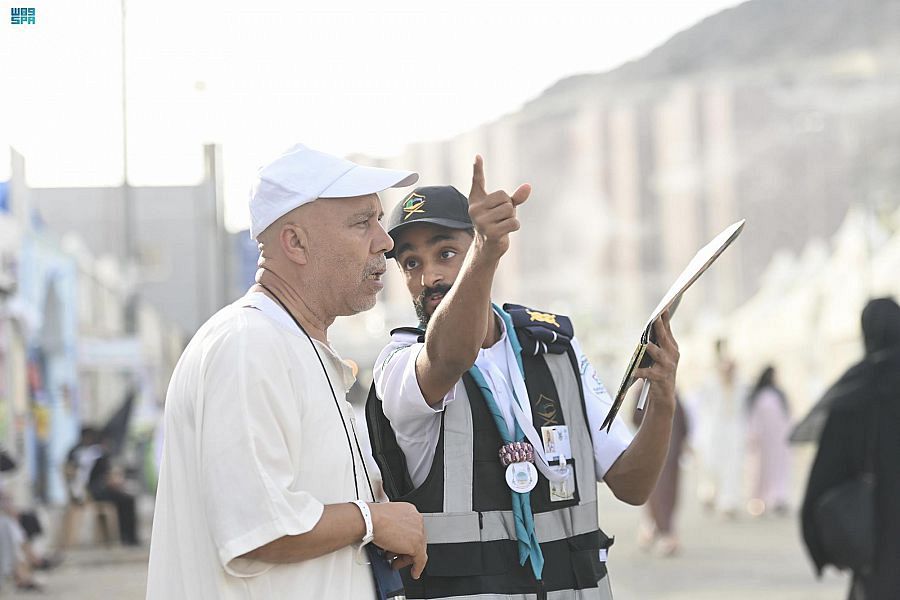
MINA: Hajj pilgrims headed to Jamarat Bridge on Sunday, where they threw 21 pebbles at its three pillars on the first Tashreeq day.
Pilgrims return to their tents after stoning the pillars, ending the main rituals of the first of the Tashreeq days, the first three days following the 10th of Dul Hijjah when Muslims celebrate Eid Al-Adha.
Hajj pilgrims head to Jamarat Bridge on Sunday. (AN photo by Mohammed Almanea)
The pilgrims were grouped before moving to the massive Jamarat Bridge for the ritual, beginning from around 12:20 p.m. as this is when most Muslim scholars agree to be the start of the process.
People can stone the pillars any time from midday to midnight on the same day of the ritual.
There were multiple paths to distribute crowds onto Jamarat Bridge to ensure smooth movement and safety.
A pilgrim flashes the victory sign after stoning the pillars at the Jamarat Bridge. (AN photo by Mohammed Almanea)
Their movement was closely monitored by Makkah Gov. Prince Khaled Al-Faisal, who is also the head of the Supreme Hajj Committee, along with his deputy Prince Badr bin Sultan.
The infrastructure showpiece has 12 entrances, 12 exit roads from four directions, two tunnels, 19 ramps, escalators, emergency exits, helipads, six service buildings, and an air-conditioning system with water sprinklers to cool the atmosphere and reduce the area’s temperature to 29 degrees Celsius.
Saudi security authorities, health workers, and other government agencies taking part in this Hajj season have been providing services to pilgrims to help them perform their rituals easily and comfortably.
The Ministry of Health has said there have been no outbreaks of any disease that could affect public health during this Hajj. It also confirmed that the Hajj plans were running smoothly and safely.
Druze: the great survivors
How the worlds most secretive faithhas endured for a thousand years
Enter
keywords




